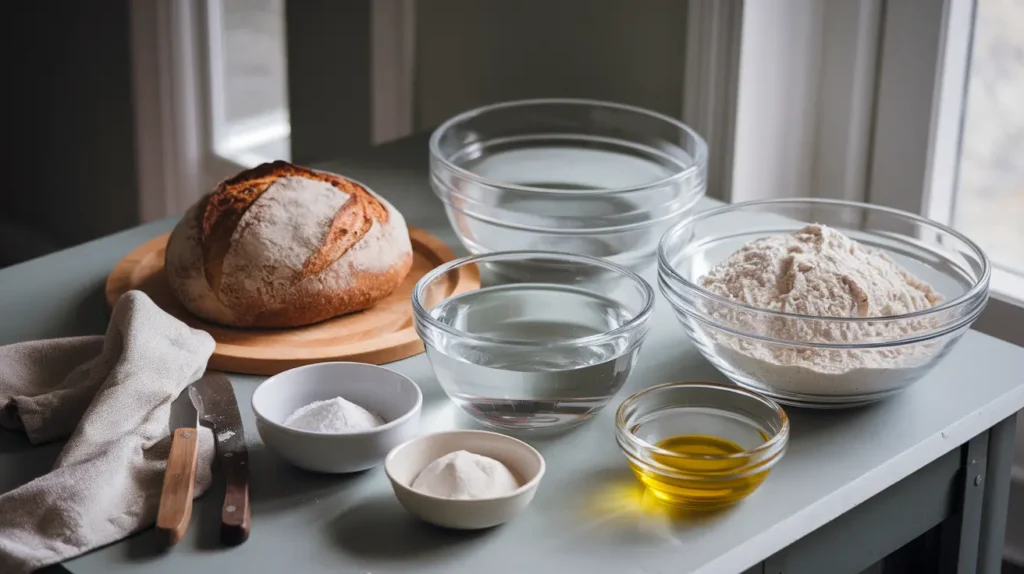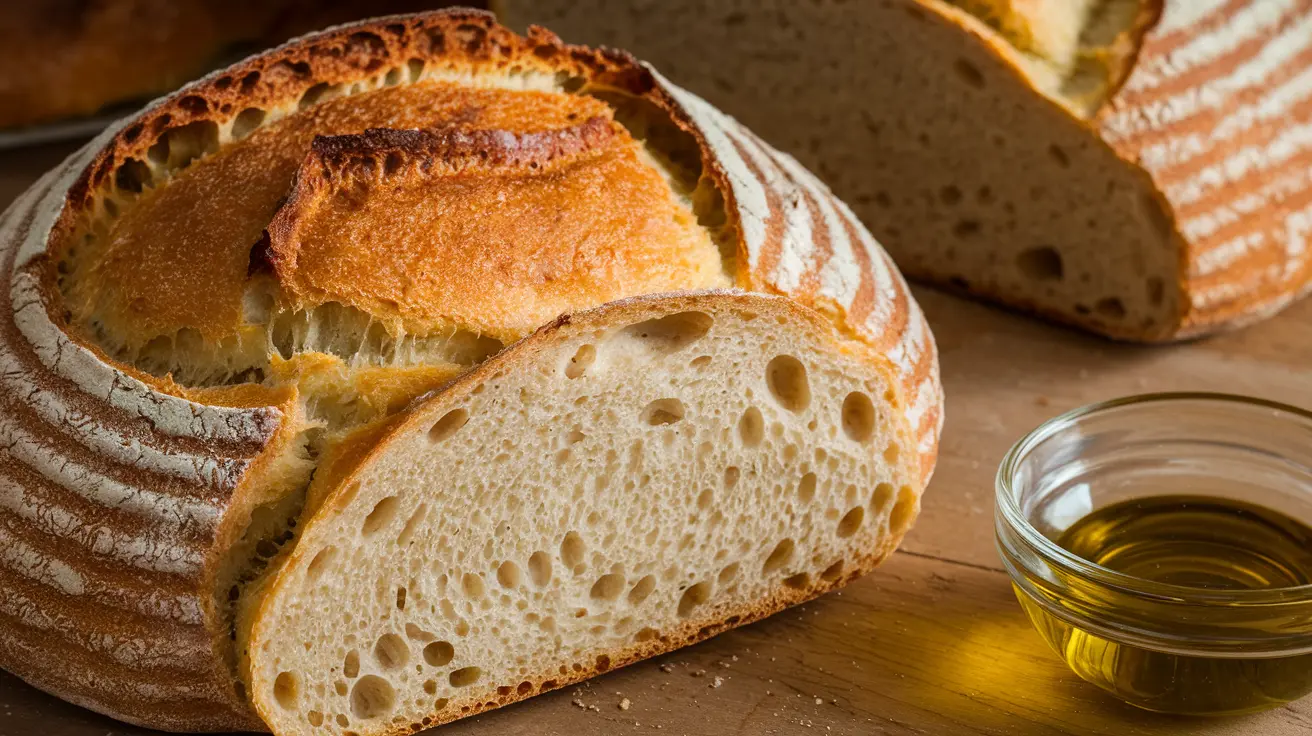The Allure of French Bread
Picture this: the comforting aroma of freshly baked French bread wafting through your kitchen, its golden crust crackling gently under your touch. With each bite, you experience the magic of a perfectly soft and airy interior paired with a satisfyingly crisp crust. French bread isn’t just a culinary staple—it’s a way to elevate any meal into a memorable experience.
Whether you’re a seasoned baker or someone trying this for the first time, this comprehensive guide will help you master the art of French bread, right in your home kitchen. From choosing the best ingredients to nailing the perfect bake, you’re about to uncover every secret to creating a baguette that rivals the best boulangeries in Paris.
Table of Contents
What Makes French Bread Unique?
French bread stands out among other types of bread for its simplicity and sophistication. Unlike sourdough or ciabatta, traditional French bread uses minimal ingredients—flour, water, yeast, and salt. Yet, these humble components come together to create a loaf that’s crisp on the outside and delightfully tender on the inside.
- Texture and Taste: The hallmark of French bread is its crusty exterior and light, slightly chewy interior. The flavor is subtly sweet, with a toasty aroma that develops during baking.
- Cultural Significance: French bread, particularly the baguette, is an integral part of French culture. It’s so essential that France has laws regulating its production, ensuring the tradition remains authentic.
Understanding what sets French bread apart will help you appreciate the process and results of making it at home.
Ingredients You’ll Need for French Bread

Creating authentic French bread starts with the right ingredients. Here’s what you’ll need:
| Ingredient | Quantity | Notes |
|---|---|---|
| All-purpose flour | 3 ½ cups | Preferably unbleached, high-protein. |
| Active dry yeast | 2 ¼ tsp | Ensure it’s fresh for proper rise. |
| Salt | 2 tsp | Use fine sea salt for best results. |
| Warm water | 1 ½ cups | Temperature: 110°F for activating yeast. |
Why Ingredient Quality Matters
The simplicity of French bread means each ingredient plays a crucial role. Using high-quality flour and yeast ensures the best texture and flavor. Avoid iodized salt as it can alter the taste subtly.
Step-by-Step French Bread Recipe
Step 1: Activate the Yeast
Start by dissolving the yeast in warm water with a pinch of sugar. Let it sit for about 10 minutes until it becomes frothy. This step ensures your yeast is alive and ready to work its magic.
Step 2: Prepare the Dough
In a large mixing bowl, combine the flour and salt. Slowly pour in the yeast mixture, stirring with a wooden spoon or dough hook attachment. Once combined, knead the dough for 10-12 minutes by hand or 6-8 minutes in a stand mixer. The dough should be smooth and elastic.
Step 3: First Rise
Shape the dough into a ball and place it in a lightly greased bowl. Cover with a damp cloth and let it rise in a warm, draft-free area for about an hour or until it doubles in size.
Step 4: Shape the Dough
Punch down the risen dough to release air. Divide it into two equal portions and roll each portion into a long, cylindrical shape. Want to put your French bread to creative use? Try pairing it with our Stuffed French Toast Recipe: A Delicious Twist for a decadent breakfast idea.
Step 5: Final Proof and Bake
Place the shaped dough on a baking sheet lined with parchment paper. Cover and let it rise for another 30 minutes. Preheat your oven to 450°F. Before baking, score the tops with a sharp knife to allow for proper expansion. Bake for 20-25 minutes, adding a pan of water to the oven for steam. This step creates the iconic crusty exterior.
Pro Tips for the Perfect French-Bread
- Steam is Key: Steam during the first few minutes of baking is essential for achieving a crisp crust. Place a tray of water in the oven or spray the loaf with water before baking.
- Scoring Techniques: Use a sharp blade to make diagonal cuts across the dough. This allows the bread to expand evenly.
- Patience Pays Off: Don’t rush the proofing stages. Allowing the dough to rise fully will result in a better texture and flavor.

Pairing French Bread with Classic Dishes
French-bread is incredibly versatile and complements many French dishes. For a hearty and satisfying meal, pair it with our Ultimate Croque-Monsieur Recipe: A French Classic You’ll Love—a rich, cheesy delight that’s sure to impress.
- French Onion Soup: The crusty bread is perfect for soaking up the rich broth.
- Cheese Boards: Pair with creamy Brie, Camembert, or tangy Gruyère.
- Simple Spreads: Top with garlic butter, herb-infused olive oil, or a tangy tapenade.
These pairings elevate both the bread and the dishes, making every bite a culinary delight.
FAQ About French Bread Recipe
Why is my French-bread not crusty?
Crust issues are usually due to a lack of steam during baking. Ensure you add a pan of water or spritz the oven walls with water for the first 10 minutes.
Can I use whole wheat flour instead of all-purpose flour?
Yes, but the texture and flavor will differ. Whole wheat flour creates a denser loaf, so consider mixing it with all-purpose flour for better results.
How do I store French bread for maximum freshness?
French-bread is best enjoyed fresh but can be stored in a paper bag for up to 2 days. For longer storage, wrap it tightly in aluminum foil and freeze it.
Can I use stale French bread for something else?
Absolutely! Stale French-bread is perfect for recipes like our Perfect Pain Perdu Recipe: A Timeless French Delight—a classic French take on bread pudding that’s simple and delicious.
Conclusion: Bake Your Own Slice of France
There’s a unique satisfaction in crafting your own French-bread. The process teaches you patience and precision while rewarding you with a loaf that tastes far superior to store-bought options. Whether you enjoy it plain, toasted, or paired with your favorite dishes, your homemade French bread will become a family favorite.
So why wait? Gather your ingredients, follow this guide, and bring a slice of Parisian charm into your kitchen. Share your experience in the comments below and let us know how your baking journey turns out!

